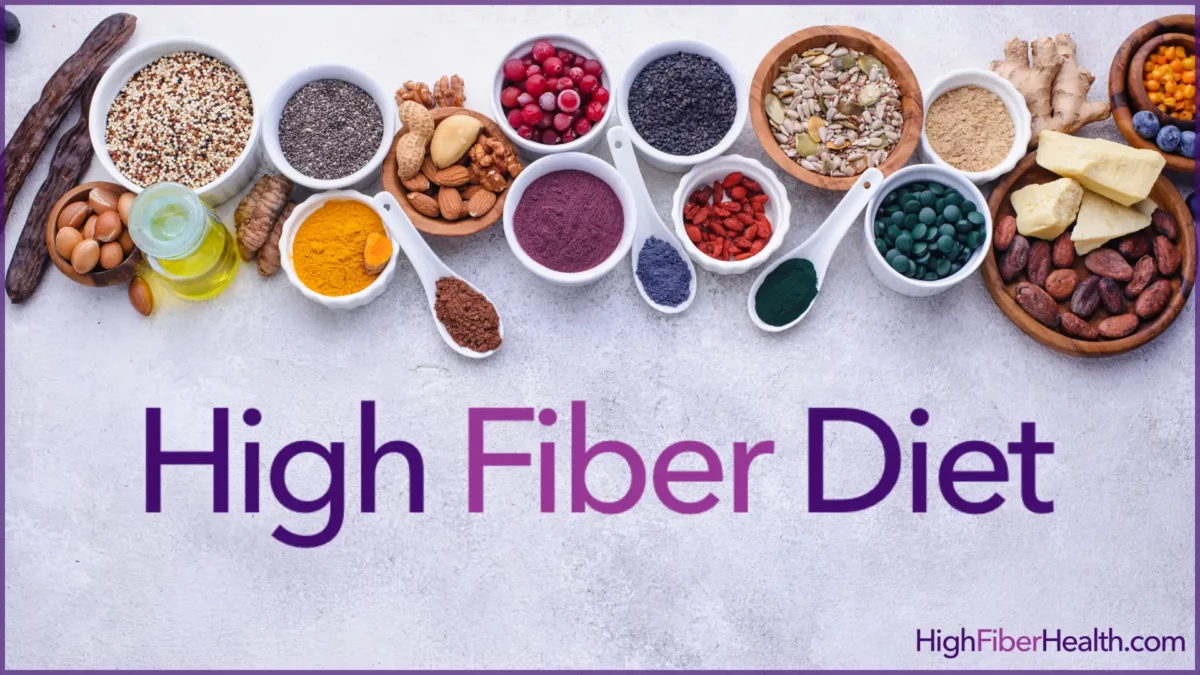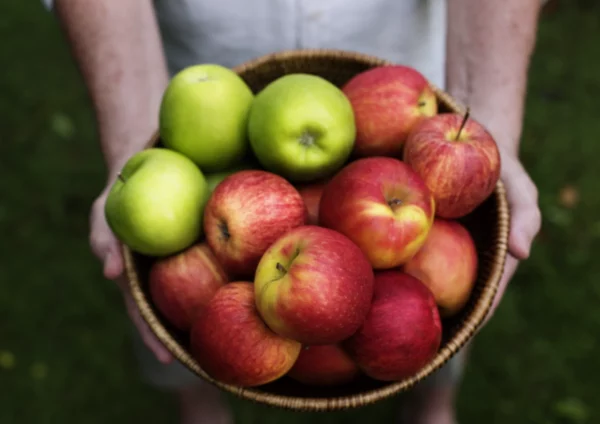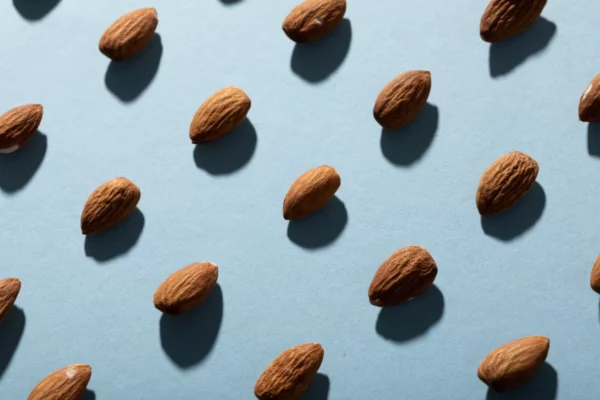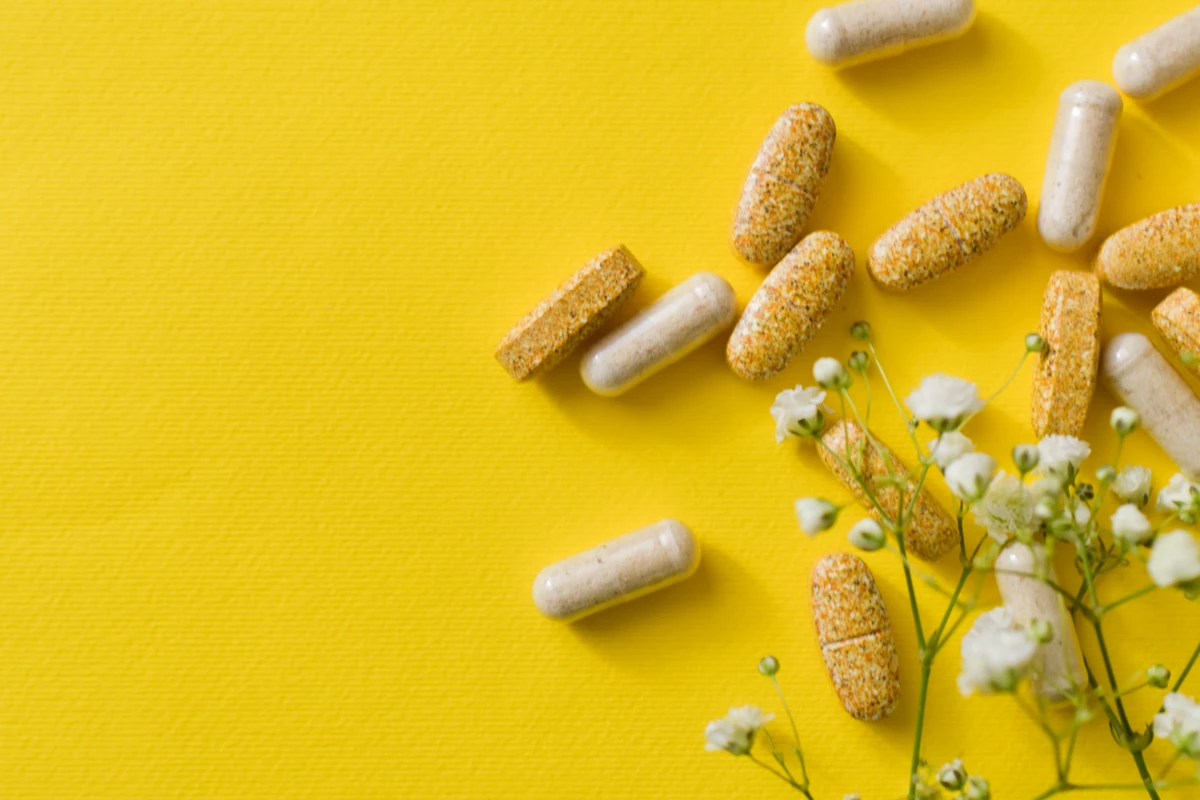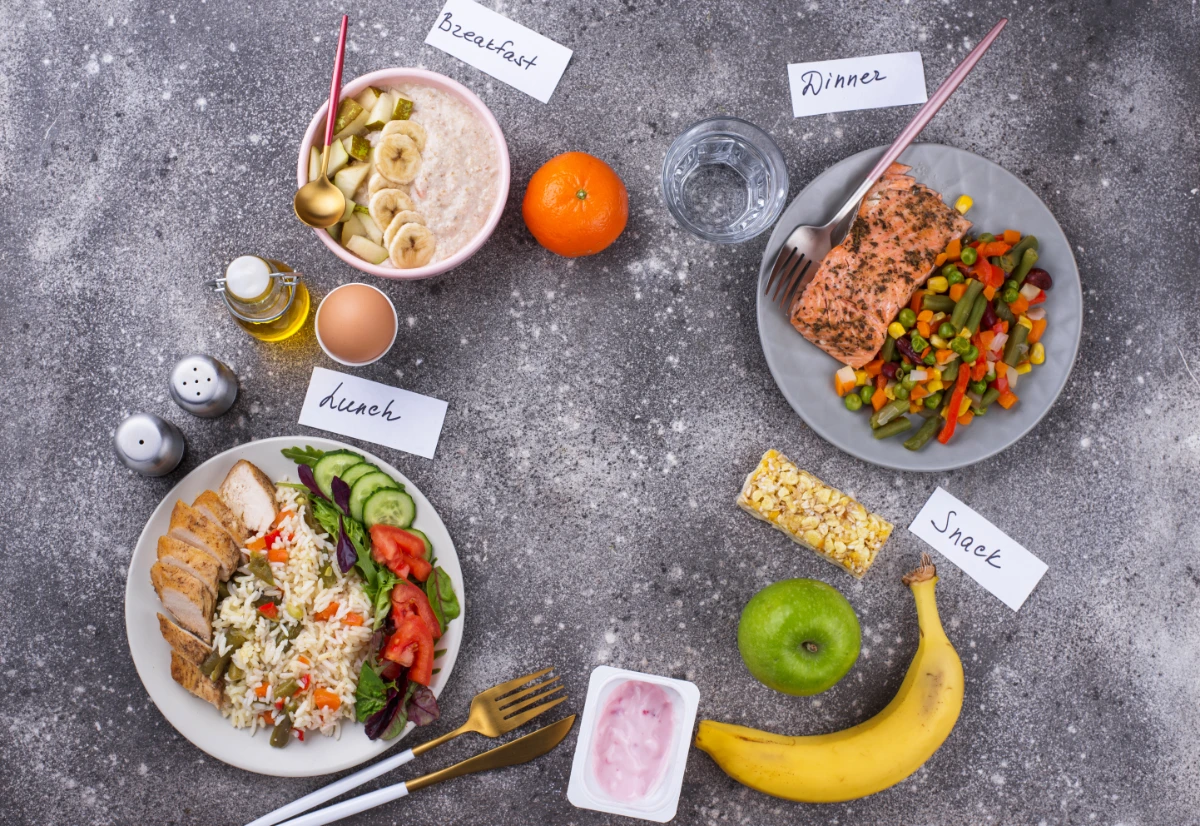Are you considering transitioning to a high fiber diet? If so, you may be wondering how long it will take for your body to adjust to this new way of eating. While the benefits of a high fiber diet are well-known, the adjustment period can vary from person to person.
In this article, we will explore the factors that influence how long it takes for your body to adapt to a high fiber diet and provide some tips to make the transition smoother. Whether you’re looking to incorporate more fruits, vegetables, whole grains, or legumes into your meals, understanding the timeline for adjustment can help you stay motivated and committed to your new dietary goals. So, let’s dive in and discover the secrets to a successful transition to a high fiber diet!
The Importance of Fiber in the Diet
A high-fiber diet is widely recognized as a cornerstone of good health, providing numerous benefits for the digestive system, weight management, and overall well-being. Fiber is an essential nutrient that plays a crucial role in maintaining a healthy digestive system. It is a type of carbohydrate that cannot be digested by the body, but it provides numerous health benefits.
There are two types of fiber: soluble and insoluble. Soluble fiber dissolves in water and forms a gel-like substance in the digestive tract, which helps to slow down digestion and stabilize blood sugar levels. Insoluble fiber, on the other hand, adds bulk to the stool and helps prevent constipation. Both types of fiber are important for a balanced diet.
A diet rich in fiber has been linked to a reduced risk of various health conditions, including heart disease, type 2 diabetes, and certain types of cancer. Additionally, fiber can help with weight management by promoting feelings of fullness and reducing calorie intake. Despite these benefits, many people do not consume enough fiber in their daily diet. The recommended daily intake of fiber for adults is 25 to 38 grams, depending on age and gender. However, the average person only consumes about half of that amount. By transitioning to a high fiber diet and incorporating some of the top 50 high fiber foods, you can significantly increase your fiber intake and reap the many health rewards.
Understanding the Body’s Digestion Process
Before diving into the timeline for adjusting to a high fiber diet, it’s important to understand how the body digests fiber. When you consume fiber-rich foods, they pass through the stomach and enter the small intestine, where most of the digestion and absorption of nutrients takes place. However, the body cannot break down fiber into smaller molecules like it does with other nutrients, such as carbohydrates, proteins, and fats. Instead, fiber remains intact as it moves into the large intestine, or colon.
In the colon, fiber acts as a prebiotic, providing nourishment for beneficial gut bacteria. These bacteria ferment the fiber, producing short-chain fatty acids, which have numerous health benefits. They help maintain a healthy gut environment, improve nutrient absorption, and reduce the risk of certain diseases. The fermentation process also produces gas, which can cause bloating and discomfort, especially when transitioning to a high fiber diet. This is one of the common challenges that people may face during the adjustment period.
Common Challenges When Transitioning to a High Fiber Diet
Transitioning to a high fiber diet can come with its share of challenges. One of the most common challenges is an increase in bloating and gas. As mentioned earlier, the fermentation of fiber in the colon produces gas, which can lead to uncomfortable symptoms. This is particularly true if you increase your fiber intake too quickly or if your gut bacteria are not accustomed to fermenting fiber. However, these symptoms are usually temporary and tend to subside as your body adjusts to the higher fiber intake.
Another challenge that some people face is an increase in bowel movements or changes in stool consistency. Fiber adds bulk to the stool, which can help prevent constipation. However, if you’re not used to consuming a lot of fiber, it can initially lead to more frequent bowel movements or loose stools. Again, this is a temporary adjustment period as your body adapts to the increased fiber intake. Drinking plenty of water and gradually increasing your fiber intake can help minimize these symptoms.
Additionally, some high fiber foods may cause digestive discomfort for certain individuals. For example, legumes, such as beans and lentils, contain a type of carbohydrate called oligosaccharides, which can be difficult to digest. This can result in gas and bloating in some people. If you experience these symptoms, it may be helpful to soak legumes before cooking or try digestive aids, such as Beano, to help break down the oligosaccharides.
How Long Does it Take for the Body to Adjust to a High Fiber Diet?
The length of time it takes for your body to adjust to a high fiber diet can vary depending on several factors, such as your current fiber intake, overall diet, gut health, and individual differences. Generally, it takes about a week for your body to adapt to a higher fiber intake.
During this time, you may experience some of the challenges mentioned earlier, such as bloating and changes in bowel habits. However, these symptoms should gradually improve as your body gets used to the increased fiber intake.
To make the transition smoother, it’s important to gradually increase your fiber intake rather than making drastic changes overnight. Start by adding a serving of high fiber food to one meal each day and gradually increase the amount over time. This allows your digestive system to adjust at a more comfortable pace. Additionally, make sure to drink plenty of water throughout the day as fiber needs water to pass through the digestive system smoothly. Staying hydrated can help prevent constipation and other digestive issues.
Understanding Timelines and the Digestive Process
The timelines for a high-fiber diet to show results can vary depending on factors such as the individual’s current dietary habits, the amount of fiber consumed, and the body’s response to dietary changes. Here is a general progression you might experience:
1. Initial Adjustment Period (1-2 Weeks): When transitioning to a high-fiber diet, your digestive system may need time to adapt. It is common to experience some temporary bloating or changes in bowel movements during this period.
2. Improved Bowel Movements and Digestive Health (2-4 Weeks): With consistent adherence to a high-fiber diet, you can expect to see improvements in bowel regularity and digestive health. Insoluble fiber adds bulk to the stool, while soluble fiber aids in softening it, making it easier to pass through the digestive tract.
3. Weight Management and Feeling of Fullness (Several Weeks): A high-fiber diet promotes a feeling of fullness, which can help with weight management by reducing overall calorie intake. As soluble fiber forms a gel-like substance in the stomach, it slows down digestion, contributing to prolonged satiety.
4. Impact on Blood Sugar and Cholesterol Levels (Months): Soluble fiber can help regulate blood sugar levels by slowing the absorption of sugars into the bloodstream. Additionally, it can help lower LDL (bad) cholesterol levels, reducing the risk of heart disease.
Tips for a Smooth Transition to a High Fiber Diet
Here are some tips to help you transition to a high fiber diet more smoothly:
1. Start slow: Gradually increase your fiber intake by adding one high fiber food at a time. This allows your body to adjust gradually and minimizes digestive discomfort.
2. Choose whole foods: Opt for whole foods that are naturally high in fiber, such as fruits, vegetables, whole grains, and legumes. These foods provide a wide range of nutrients in addition to fiber.
3. Include a variety of fiber sources: Aim to incorporate different types of fiber into your diet. This includes both soluble and insoluble fiber from various food sources. This will ensure that you’re getting a balanced intake of fiber and reaping the full benefits.
4. Stay hydrated: Drink plenty of water throughout the day to help fiber move through your digestive system smoothly. Aim for at least eight cups of water per day, or more if you’re physically active or live in a hot climate.
5. Listen to your body: Pay attention to how your body responds to the increased fiber intake. If certain foods cause digestive discomfort, try different preparation methods or cooking techniques to make them more digestible.
6. Consider supplements: If you’re struggling to meet your fiber needs through diet alone, you can consider taking a fiber supplement. However, it’s always best to prioritize whole foods as they provide a wider range of nutrients.
7. Read food labels: Check the grams of fiber on food labels to make informed choices. Aim for a daily intake of 25-38 grams of fiber, as recommended by the Institute of Medicine.
8. Consult a healthcare professional: If you have specific health conditions or concerns, it is advisable to consult a healthcare provider or registered dietitian for personalized guidance on incorporating fiber into your diet.
Foods High in Fiber to Incorporate into Your Diet
When transitioning to a high fiber diet, it’s important to include a variety of foods that are naturally high in fiber.
We use the 5 by 5 framework when incorporating these foods into your diet. Eat foods from each of the five main categories of fiber:
1. Fruits: Berries, apples, pears, oranges, and bananas are all excellent sources of fiber. Aim for at least two servings of fruit per day to increase your fiber intake.
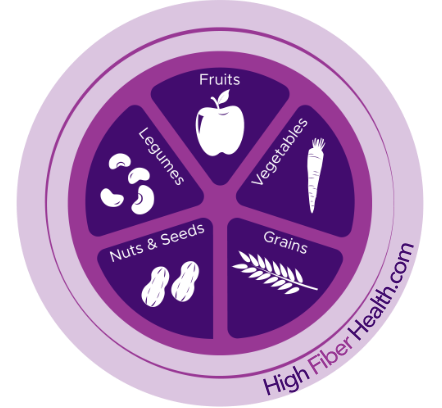
2. Vegetables: Broccoli, Brussels sprouts, carrots, spinach, and sweet potatoes are all packed with fiber. Aim to fill half of your plate with vegetables at each meal.
3. Whole grains: Oats, quinoa, brown rice, whole wheat bread, and whole grain pasta are great sources of fiber. Opt for whole grain versions of your favorite foods to boost your fiber intake.
4. Legumes: Beans, lentils, chickpeas, and peas are all high in fiber and protein. Add them to soups, salads, and stews or make them the main ingredient in vegetarian dishes.
5. Nuts and seeds: Almonds, chia seeds, flaxseeds, and pumpkin seeds are all rich in fiber. Sprinkle them on top of yogurt, oatmeal, or salads for an extra fiber boost.
The Role of Hydration in a High Fiber Diet
Drinking an adequate amount of water is essential when following a high fiber diet. Fiber absorbs water and swells in the digestive tract, which helps to soften the stool and prevent constipation. However, without enough water, fiber can have the opposite effect and lead to digestive issues, such as bloating and discomfort. Make sure to drink plenty of water throughout the day, especially when increasing your fiber intake. Aim for at least eight cups of water per day, or more if you’re physically active or live in a hot climate.
In addition to water, you can also include hydrating foods in your diet to support digestion. Fruits and vegetables with high water content, such as cucumbers, melons, and citrus fruits, can contribute to your daily hydration needs. Herbal teas and infused water can also be refreshing alternatives to plain water and help you meet your hydration goals.
Potential Side Effects of a High Fiber Diet and How to Manage Them
While a high fiber diet offers numerous health benefits, it’s important to be aware of potential side effects and know how to manage them. As mentioned earlier, bloating and gas are common side effects when transitioning to a high fiber diet. To manage these symptoms, try the following strategies:
1. Increase fiber intake gradually: Start with small increases in fiber and gradually build up over time. This allows your body to adjust more comfortably.
2. Chew your food thoroughly: Properly chewing your food can aid digestion and minimize the risk of gas and bloating. Take your time and enjoy each bite.
3. Stay hydrated: Drink plenty of water throughout the day to help fiber move through your digestive system smoothly. This can help prevent constipation and ease bloating.
4. Be mindful of gas-producing foods: Some foods, such as beans, lentils, and cruciferous vegetables, are more likely to cause gas. If you notice that certain foods trigger discomfort, try cooking them in different ways or opting for lower gas-producing alternatives.
5. Consider digestive aids: Over-the-counter digestive aids, such as Beano, can help break down complex carbohydrates and reduce gas production. Consult with your healthcare provider or pharmacist before using any digestive aids.
Frequently Asked Questions About Transitioning to a High Fiber Diet
1. Q: Can I consume too much fiber?
A: While fiber is essential for good health, consuming excessive amounts can lead to digestive discomfort, such as bloating, gas, and diarrhea. It’s important to gradually increase your fiber intake and listen to your body’s signals.
2. Q: Can I get enough fiber from supplements alone?
A: While fiber supplements can be helpful, it’s best to prioritize whole foods as they provide a wider range of nutrients. Aim to meet your fiber needs through a combination of whole foods and supplements, if necessary.
3. Q: Can a high fiber diet help with weight loss?
A: Yes, a high fiber diet can aid weight loss by promoting feelings of fullness, reducing calorie intake, and improving digestion. However, it’s important to combine a high fiber diet with other healthy lifestyle factors, such as regular exercise and balanced eating.
4. Q: Can I still eat meat on a high fiber diet?
A: Yes, you can still include meat in your diet while following a high fiber eating plan. However, it’s important to also incorporate plant-based sources of fiber, such as fruits, vegetables, whole grains, and legumes.
5. Q: Can a high fiber diet help with constipation?
A: Yes, a high fiber diet can help prevent and relieve constipation by adding bulk to the stool and promoting regular bowel movements. However, it’s important to drink plenty of water to ensure the fiber moves through the digestive system smoothly.
Conclusion: The Long-Term Benefits of a High Fiber Diet
Transitioning to a high fiber diet may come with some initial challenges, but the long-term benefits are well worth it. By gradually increasing your fiber intake and making smart food choices, you can support your digestive health, improve weight management, and reduce the risk of chronic diseases. Remember to stay hydrated, listen to your body, and make adjustments as needed. With time, patience, and a well-rounded approach, you can successfully adapt to a high fiber diet and enjoy all the health rewards it has to offer. So, start incorporating more fiber-rich foods into your meals today and give your body the nourishment it deserves!
